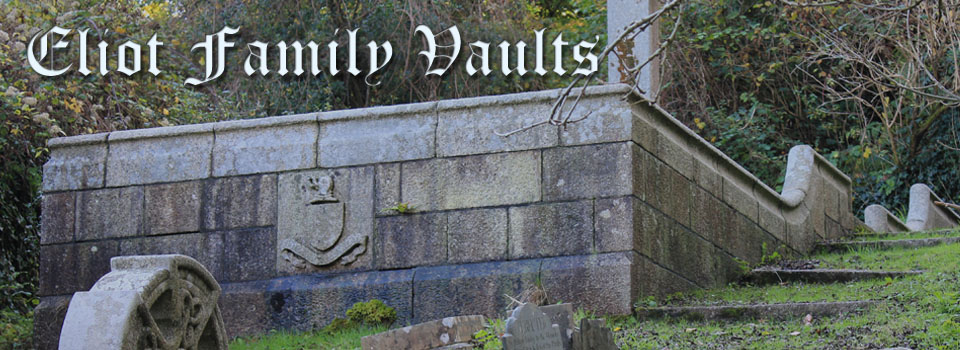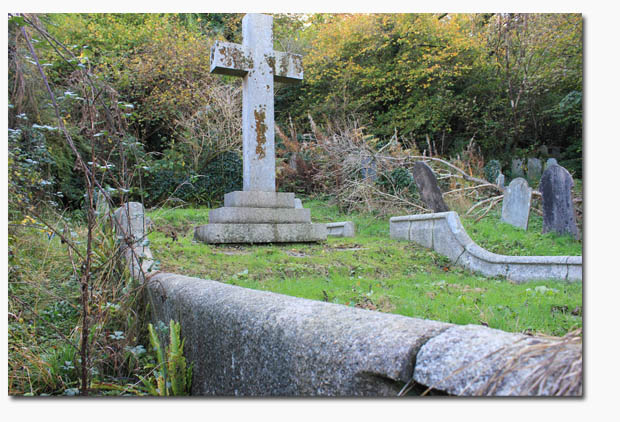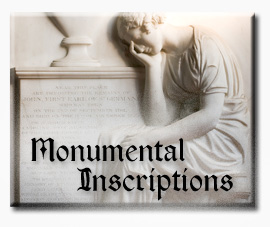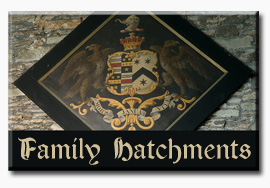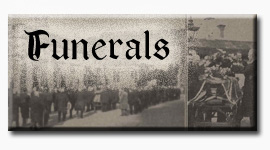The Eliot Family Burial Vaults: An Overview
The Eliot family of Port Eliot have buried their loved ones in St. Germans for more than four hundred years. During that span, burials have taken place in three different family vaults, with a few recent burials in the grounds of Port Eliot.
For the first two hundred years of their residency, the family were all buried in the ancient vault under the south aisle in St. German's Church – excepting three Eliots who were buried in a small private vault just outside the church, below the eastern Chancel window. When the day came that these two vaults were filled, plans had to be made for a new burial place for the descendants of the Eliot forefathers already resting beneath the altar.
That work fell to Edward, 1st Lord Eliot, who had long since desired the removal of the unsanitary and unsightly churchyard (extending right up to the edge of his house and dining-room windows). He received a faculty from the Bishop for removal of the stones and remains to a new churchyard, for which he donated a piece of land about a quarter of a mile west of the church. During the move, he built the third family vault into the hillside at the new churchyard. This stone structure, completed between 1780 and 1784, was designed to convey the status of the rising Eliot family.
That was more than two hundred years ago. This vault, too, is full; and the "new" churchyard is now called the "Old Cemetery". A gate stands at the Church Street entrance of the cemetery, opening onto a little path which winds between the many gravestones hidden beneath thick undergrowth and trees. The cemetery is largely forgotten and overgrown, visitors rarely stopping to read the names of those resting beneath the many memorials. At the very end of the cemetery, built on the side of a hill, stands the Eliot vault. Once a proud stone structure, the now weathered and fading family arms (predating any Barony or Earldom) stand carved in stone, inset between the large stone blocks on the north end. Flat stone steps lead up to the grass-covered top of the vault, where two large stone slabs (the entryway into the vault compartments below) lay at the foot of a large granite cross erected in 1903. Stone tablets lay buried in the earth, on the top of the vault, with their raised stone letters now chipping off, leaving partial memorials to those men and women who bore the proud Eliot name. Visitors no longer climb those steps, and the grass continues to grow and cover the stones until they are hidden from sight. It is this forgotten spot that marks the final earthly resting place of many once loved and respected members of the Eliots of Port Eliot.
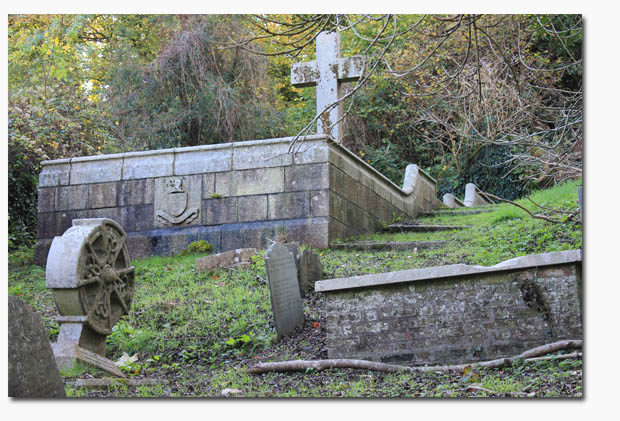
My research of this whole family began with this particular vault, so there is something special and familiar about this place to me, even though I have never seen it in person. Six of the ten Earls of St. Germans rest here, along with fourteen other members of their family, and it seems to me that they would be quite sad to know how forgotten their graves have become over the years.
Three Eliots lie in a small, unmarked, brick vault below the eastern Chancel Window of the church (looking into the grounds of Port Eliot), most probably the resting place of the father and mother from whom all Lord Eliots and Earls of St. Germans descend.
Many of the earlier members of the family were buried in the ancient vault in the Lady's Chapel of the church, having fared a little better than the others, due to the erection (in 1895) of a large bronze plaque bearing their names (despite the several errors). Due to the total loss of any records for this vault, its actual location at the upper end of the South Aisle would have remained a mystery but for one reference made by Browne Willis, the famous historian. Access to this vault is no longer possible; even the mode of entry is unknown (whether by door and stairs or through floor stones). The floor of this chapel was lowered fourteen inches in the great renovation of the church in the 1890s, with a new marble floor laid on top of "three inches of concrete and one inch of cement". At this time, two floor memorials (18th-century Eliot plaques) were removed and then replaced on the new floor, but it seems most likely that any entrance to the old vault is now buried beneath a thick layer of concrete and cement.
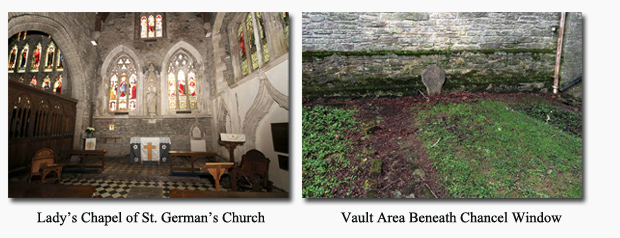
Discovering the location of the last resting places of the Eliots of Port Eliot has proven to be one of the most difficult mysteries of this whole puzzle. Hopefully, these web pages will clear up some of the oft-repeated errors published concerning these three family vaults. It has taken years and quite a bit of work to sift through bits of information, piecing the stories and lists together. Lord St. Germans has answered more questions about vaults, funerals and graves than he probably thought anyone could think to ask. Many thanks go out to Graham, Margaret and Malcolm – three very kind people in Cornwall who were willing to go out to the hillside vault and dirty their hands and knees while clearing away decayed plant matter from each of the stone memorial tablets in order to photograph them. Without their help, these burials would still be a total mystery and rather impossible to sort out. The Eliots of Port Eliot are an old and important part of the history of England, and they deserve to be remembered.

But we do not want you to be uninformed, brethren, about those who are asleep, so that you will not grieve as do the rest who have no hope. For if we believe that Jesus died and rose again, even so God will bring with Him those who have fallen asleep in Jesus. For this we say to you by the word of the Lord, that we who are alive and remain until the coming of the Lord, will not precede those who have fallen asleep. For the Lord Himself will descend from heaven with a shout, with the voice of the archangel and with the trumpet of God, and the dead in Christ will rise first. Then we who are alive and remain will be caught up together with them in the clouds to meet the Lord in the air, and so we shall always be with the Lord. Therefore comfort one another with these words.
1 Thessalonians 4:13-18
